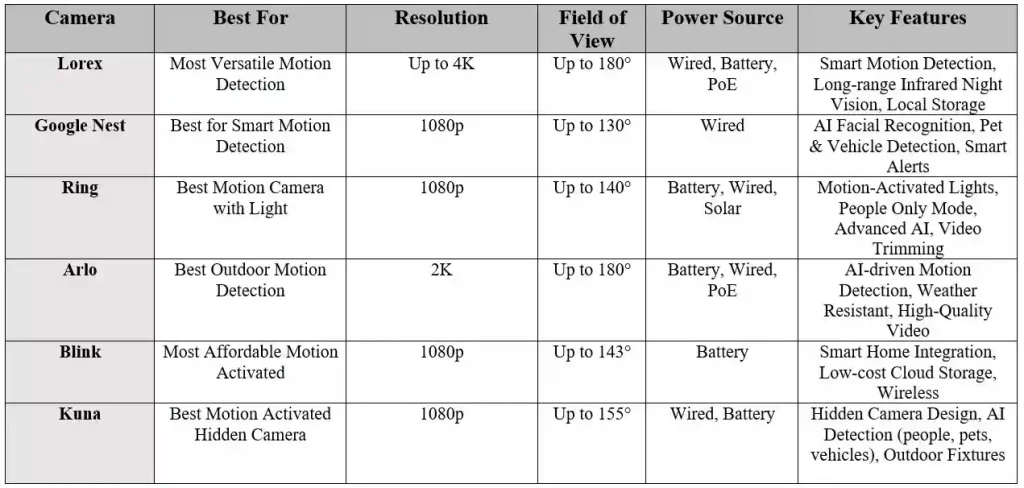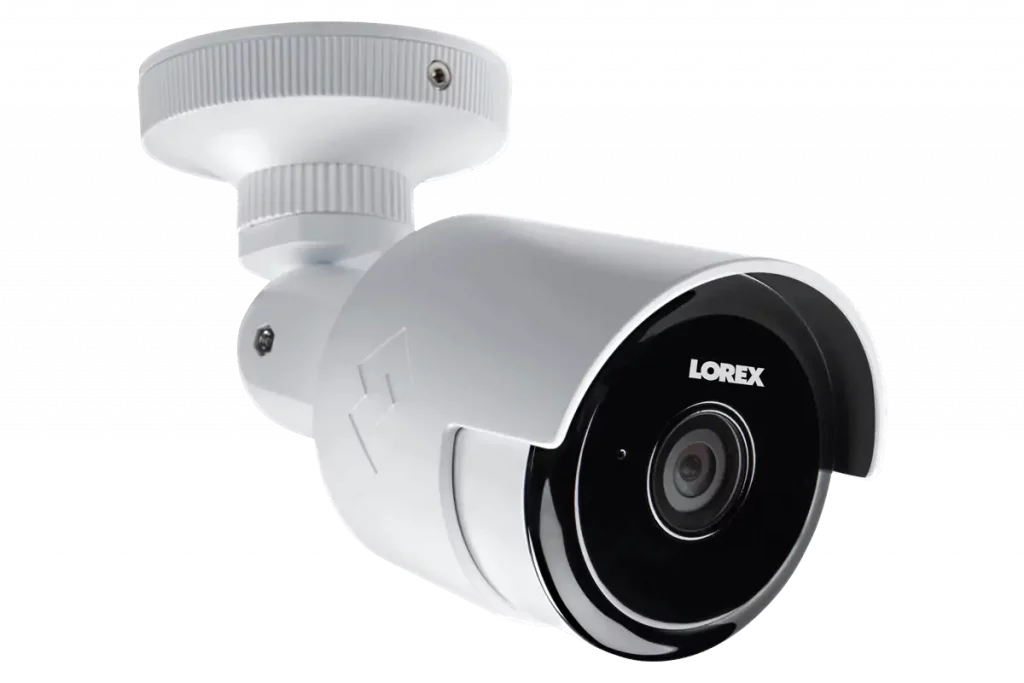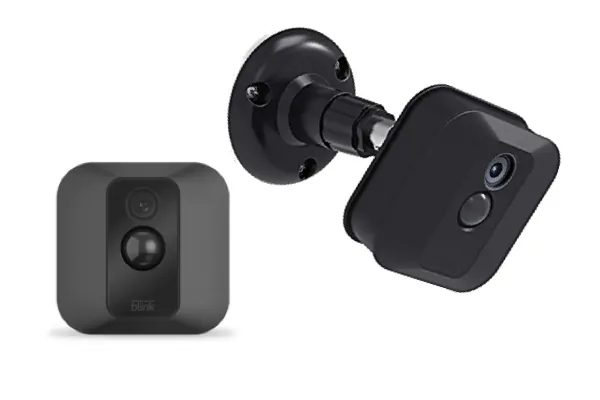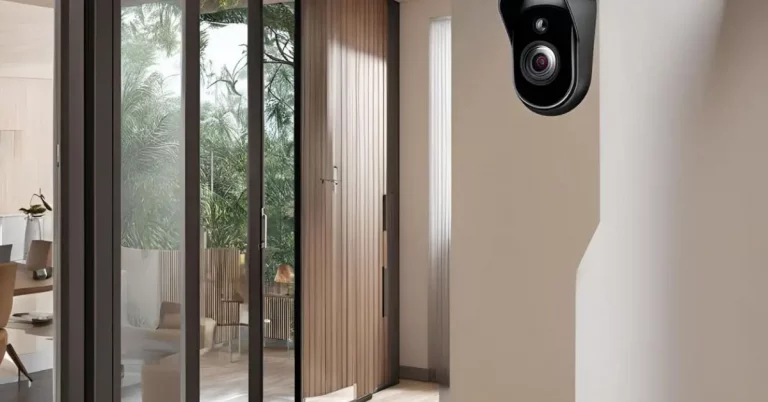When it comes to securing your home or office, most of us think about outdoor security cameras first. But let’s be real – what about the windows? Intruders can easily break in through a window, and that’s where an indoor security camera that detects motion through windows comes in. It’s a game-changer for your security setup, especially if you live in a busy area or have a lot of glass.
In this article, we’ll break down everything you need to know about indoor security cameras, why they’re essential, how they work, and the top models that can help protect your space.
Why Indoor Security Cameras Matter?
When most people think about security cameras, they usually picture bulky outdoor cameras mounted on the front porch or outside the garage. But did you know that indoor security cameras can be just as important for keeping your home or commercial space safe?
1. Understanding the Importance of Indoor Security
We all know that the exterior of your home needs protection, but did you ever stop to think about the threats that could happen indoors? Whether it’s a break-in, a package thief, or a pet knocking something off the table, indoor security cameras are essential. They monitor movement, alert you to unexpected changes, and can even help catch anyone snooping around when you’re not home.
2. Windows as a Weak Point
Let’s talk windows for a second. For many of us, windows provide a lot of light and openness in our homes. But they can also be an entry point for burglars, especially if they’re left unlocked or if someone’s determined enough to break in.
This is where an indoor security camera that detects motion through windows becomes invaluable. It ensures that even if someone tries to sneak around your windows, you’ll know about it in real time.
How Motion Detection Works in Indoor Security Cameras
Okay, so here’s where it gets cool. Motion detection cameras are designed to detect changes in their environment, usually through sensors that can pick up movement in the camera’s field of view.
1. What Makes Motion Detection Cameras Special?
The magic behind motion detection lies in the technology. Most cameras use infrared sensors or PIR (passive infrared) sensors, which detect heat changes caused by moving objects. These sensors are especially useful for detecting movement through windows—even if the window is closed.
You don’t need to worry about placing the camera in direct line of sight with the moving object; it can still pick up on the subtle shift in temperature when something moves across the window. Pretty neat, right?
2. Motion Detection Through Windows
Now, here’s something a lot of people wonder about: Can motion detection cameras work through windows? The answer is, yes, they can! It’s all about the placement of the camera and how well the motion sensors are calibrated. The camera doesn’t need a direct line of sight to the person or object—it can simply detect the heat or movement through the window.
For example, I’ve got a friend who installed an indoor camera in his living room, facing a big bay window. He was concerned about burglars creeping around in the dark. The camera detects any motion—even small things like a squirrel running across the window—and sends him a notification. It’s not perfect, but it’s better than nothing!
Benefits of Choosing an Indoor Camera That Detects Motion Through Windows
1. Enhanced Security Without the Hassle
One of the most obvious benefits of choosing an indoor security camera that detects motion through windows is the added layer of security. Imagine you’re at work, and you get a notification saying there’s motion detected through your living room window. This is especially useful in urban areas or places where burglars tend to break in through windows.
These cameras act as your first line of defense, even when you’re not home. They provide peace of mind, knowing that your windows—often overlooked in traditional security setups—are being monitored.
2. Easy Installation
Indoor cameras are typically a breeze to install. Since they’re wireless, you don’t have to deal with the hassle of running wires or drilling holes in your walls. All you need is a place to mount the camera (usually near a window or entryway) and access to Wi-Fi. The whole setup can often be done in less than 30 minutes.
3. Real-Time Alerts
What really sets motion detection cameras apart is the instant notifications. Most cameras these days are equipped with real-time alerts that notify you immediately when they detect movement. You can check your phone to see what triggered the alert, and if something’s off, you can take action quickly.
For example, last year, my sister installed a motion detection camera to keep an eye on the front window. One day, the camera sent her an alert when a delivery person left a package at her door. She wasn’t home, but she could see it all through the app, giving her peace of mind.
Factors to Consider When Choosing the Best Indoor Security Camera for Motion Detection Through Windows
Choosing the right indoor security camera is no easy task. There are plenty of factors to consider to ensure you get the best value for your money.
1. Wired vs Wireless
When selecting a camera, you’ll need to decide between wired or wireless options. Wireless cameras tend to be easier to install and provide more flexibility in placement. They also tend to be more reliable, especially when it comes to detecting motion across windows. On the flip side, wired cameras might offer more stable connections but can be more difficult to set up.
I went with a wireless camera because my apartment has no existing wiring for security cameras, and I wanted a hassle-free setup.
2. Camera Resolution
Not all cameras are created equal. If you’re looking for clarity, you’ll want to choose a camera with high-definition resolution (1080p or higher). The higher the resolution, the better the quality of the image, which is especially important for identifying details when something moves in front of your window.
3. Motion Sensitivity
You’ll want a camera that can detect the smallest movements through windows, so motion sensitivity is key. Some cameras offer adjustable sensitivity settings, so you can fine-tune them based on your environment. If you live in a busy area with a lot of passing traffic or animals, you might want to lower the sensitivity a little to avoid false alarms.
4. Night Vision Capability
Let’s face it—burglars don’t operate in the daytime. That’s why having night vision capability is essential. Most modern indoor cameras come with infrared technology, allowing them to capture clear footage in low-light conditions.
5. Smart Home Integration
Look for a camera that integrates with your existing smart home system. If you already use Alexa, Google Home, or any other smart devices, make sure your camera can sync with them. It’s just one more way to streamline your security setup and control everything from a single app.
When choosing the best indoor security camera that detects motion through windows, consider factors like camera resolution, motion sensitivity, and smart home compatibility. If you want more details on choosing the right monitoring system, check out What Is a Good Home Security Camera System? 7 Must-Have Features You Can’t Ignore!
Top Indoor Security Cameras That Detect Motion Through Windows
Alright, now that we’ve covered the theory, let’s get practical. If you’re looking to buy an indoor security camera that detects motion through windows, here are some of the top picks that I personally recommend:

1. Lorex – Most Versatile Motion Detection Cameras
Overview:
Lorex is known for offering a wide variety of high-tech security cameras, making it the most versatile option on this list. Whether you’re looking for a camera for indoor or outdoor use, Lorex has a solution. They offer a range of features such as up to 4K resolution, long-range infrared night vision, and various motion detection systems, including smart AI options.

Why It’s Ranked #1:
Lorex’s broad selection and the introduction of Smart Motion Detection, which differentiates between people, vehicles, and animals, make it an outstanding choice. It’s particularly useful for those who need flexibility and advanced features in their security setup.
2. Google Nest – Best for Smart Motion Detection
Overview:
Google Nest is renowned for its smart capabilities, making it the best option for those who want top-tier motion detection and AI features. Their cameras come equipped with facial recognition, pet, and vehicle detection when paired with a Nest Aware subscription. Despite the higher price, Google Nest delivers cutting-edge technology in a compact, user-friendly package.

Why It’s Ranked #2:
Google Nest excels in intelligent motion detection. With features like facial recognition and its ability to recognize specific people and objects, it provides the best “smart” experience. It’s ideal for tech-savvy users who want AI-powered security, but the cost may be a downside for some.
3. Ring – Best Motion Camera with Light
Overview:
Ring has built its reputation on its video doorbells, but it’s now expanded its offerings to include a range of security cameras. The inclusion of motion-activated lights (in models like the Ring Floodlight Cam) improves detection accuracy at night and can act as a deterrent for potential intruders.

Why It’s Ranked #3:
Ring’s motion-activated lights, combined with its easy DIY installation, makes it an excellent choice for both indoor and outdoor use. The cameras are equipped with “People Only” mode to cut down on false alarms, making them reliable for home security. However, Ring lacks 2K or 4K resolution, which might be a drawback for some.
4. Arlo – Best Outdoor Motion Cameras
Overview:
Arlo is a top choice for outdoor motion detection with features like 2K resolution and weather resistance. Arlo cameras are designed to withstand extreme weather conditions and deliver crystal-clear video quality. The cameras also offer AI-powered motion detection, making them highly reliable.

Why It’s Ranked #4:
Arlo’s high-quality video resolution and ability to perform in extreme weather give it an edge for outdoor security. However, its higher price point and the requirement for a subscription to access all features push it down to the fourth spot.
5. Blink – Most Affordable Motion Activated Cameras
Overview:
Blink is known for offering affordable, user-friendly security cameras. While Blink lacks some of the advanced motion features found in higher-end models, its simplicity, easy setup, and wireless design make it a great option for basic security needs.

Why It’s Ranked #5:
Blink provides great value for those on a budget, offering solid performance for an entry-level price. It’s perfect for users looking for a no-fuss, affordable option. However, it lacks advanced motion features like AI recognition and has limitations with video storage and connectivity.
6. Kuna – Best Motion Activated Hidden Camera
Overview:
Kuna stands out by offering hidden cameras integrated into outdoor light fixtures, making it the perfect choice for those who prefer a stealthy security solution. The AI technology built into Kuna cameras can differentiate between people, pets, vehicles, and packages, reducing unnecessary alerts.

Why It’s Ranked #6:
While Kuna offers a unique and discreet design, its limited camera choices and higher upfront cost hold it back. It’s an excellent option for those who need hidden surveillance, but the lack of variety and features compared to the other options places it last on the list.
Common Mistakes to Avoid with Indoor Security Cameras for Windows
Even though motion detection cameras are great, they’re not foolproof. Here are some common mistakes people make when setting up or using these cameras.
1. Ignoring Window Type
Not all windows are the same. Tinted glass, reflective glass, or double-glazed windows can interfere with a camera’s ability to detect motion. Before purchasing, check whether the camera you’re eyeing works well through different types of windows.
2. Overlooking Sensitivity Settings
Setting the motion detection sensitivity too high might cause your camera to send false alerts every time a bird flies past or a car drives by. Make sure you adjust the sensitivity to fit your environment.
3. Choosing Cheap, Low-Quality Cameras
I get it—budget is important. But cutting corners on security isn’t a smart idea. Low-quality cameras might look like a good deal, but they often fail to pick up on subtle movement or provide clear images. It’s worth investing in a reputable brand.
The Power of Motion Detection Through Windows
In the end, choosing the right indoor security camera that detects motion through windows is an essential part of any modern home or office security system. Whether you are monitoring your windows for break-ins or simply want an extra layer of protection, motion detection cameras offer peace of mind. When selecting a camera, ensure it offers high resolution, adjustable motion sensitivity, and smart home integration to get the best performance. The indoor security camera that detects motion through windows is a game-changer for those looking to enhance their security without the hassle of complex setups.
For more ideas on creating an effective security setup, check out The Best DIY Home Security System for 2025.
FAQs
1. Can indoor cameras detect motion through windows at night?
Yes, most indoor security cameras come with night vision features, allowing them to detect motion through windows even in low light.
2. Do motion-detecting cameras send false alerts?
It’s possible, especially if your camera’s sensitivity is set too high or if there are frequent movements outside your window, like cars or animals.
3. Are wireless indoor cameras better than wired ones for detecting motion?
Wireless cameras are typically easier to install and position for motion detection through windows. They’re also less prone to signal interference, making them a good choice.
4. Do I need to install multiple cameras for full window coverage?
It depends on your space, but often a single camera can provide enough coverage for large windows. Just make sure the camera’s field of view is wide enough.
5. Can I integrate my indoor security camera with other smart home devices?
Yes! Many modern cameras are compatible with smart home ecosystems, allowing you to control and monitor your security system via a single app.


This Post Has 26 Comments
Pingback: What is NOT a Physical Security Measure for Your Home
Pingback: The Worst Security Camera Placement Mistakes You’re Probably Making
Pingback: viagra sildenafil 50mg price
https://bestcryptotradingplatformaustralia.com/
https://bit-apex.org/tГјrkiye-petrolleri-yatД±rД±m/
https://immediateedge-france.cc/
https://darknet-markets.cc/we-the-north/
https://darknet-markets.cc/vortex/
https://immediateedge-fr.cc/
https://cryptotradingbot.co.uk/tГјrkiye-petrolleri-yatД±rД±m/
https://immediatedge-platform.com/fr/
https://immediateprofit.cc/it/
https://immediateapex-ai.org/ja/
https://immediateapex-ai.org/es/
https://immediatedge-platform.com/nl/
https://immediatetrade-pro.com/pl/
https://immediateapex-ai.org/hi/
https://immediateedgeavis.com/
https://immediateprofit.cc/tr/
https://ethereumcode-ai.com/pl/
https://quantum-lifestyle.org/sv/
https://immediateedge-fr.org/
https://trade350-ai.com/sv/
https://immediatetrade-pro.com/de/
https://ethereumcode-ai.com/hu/
https://immediateedge-platform.cc/fi/